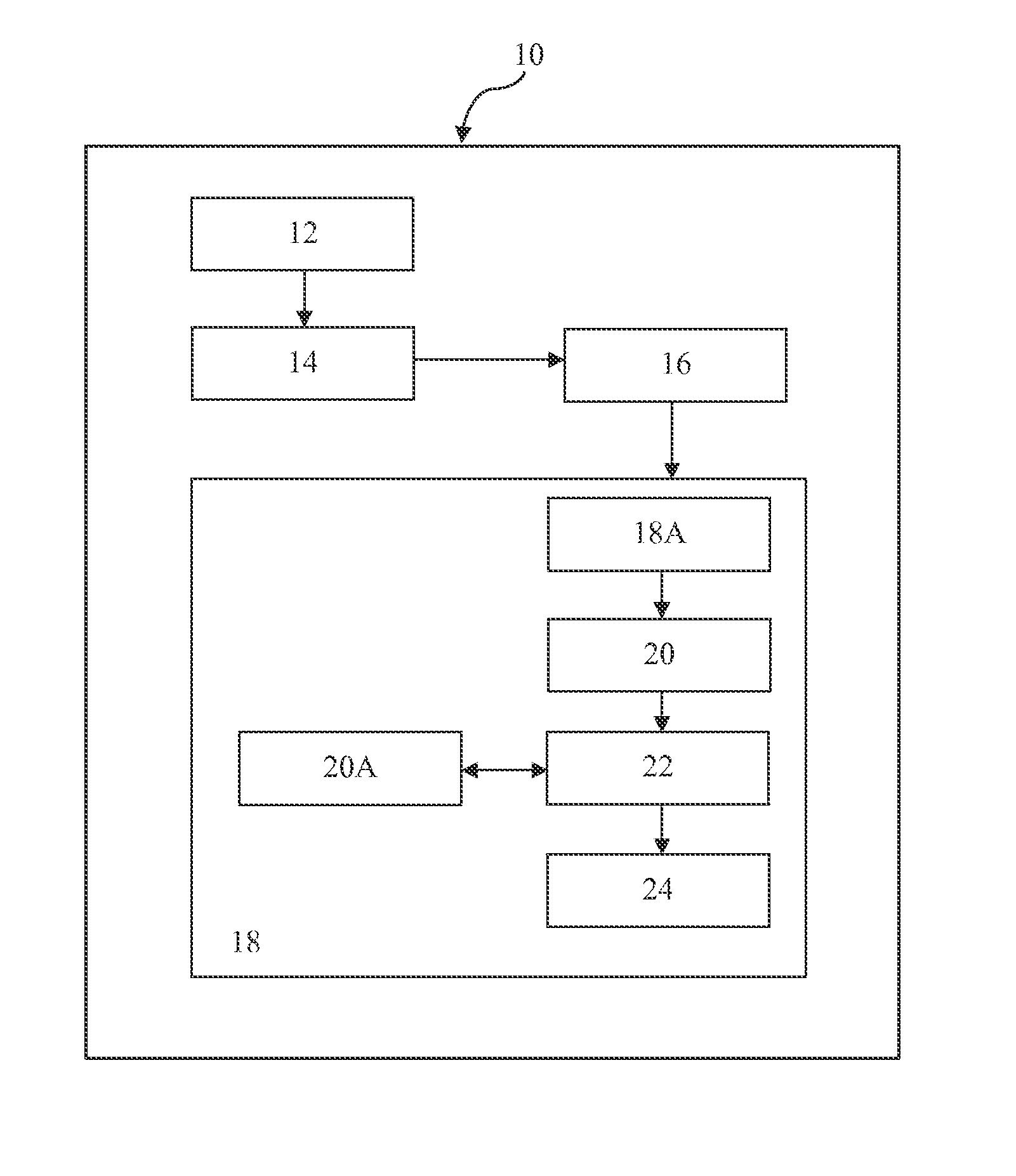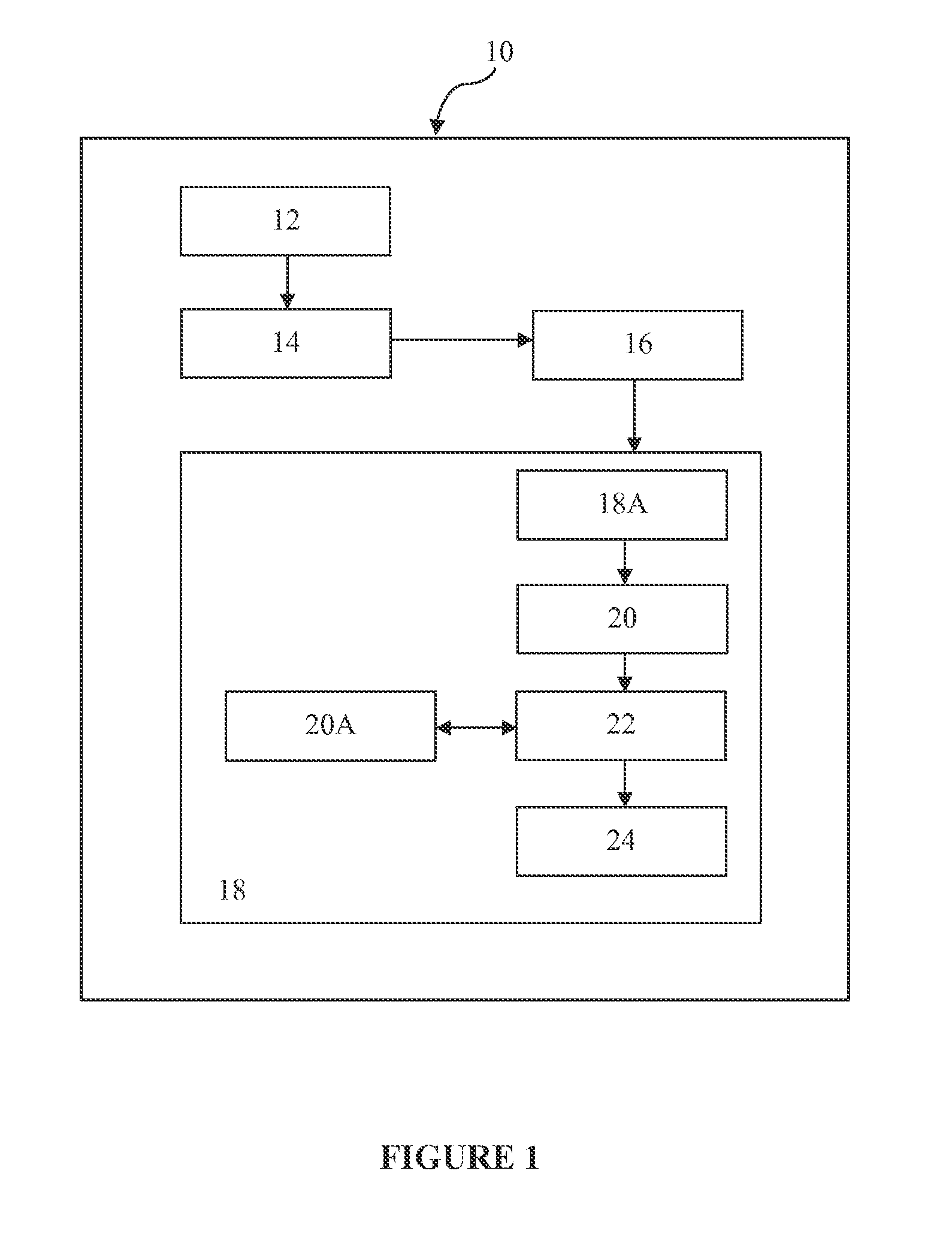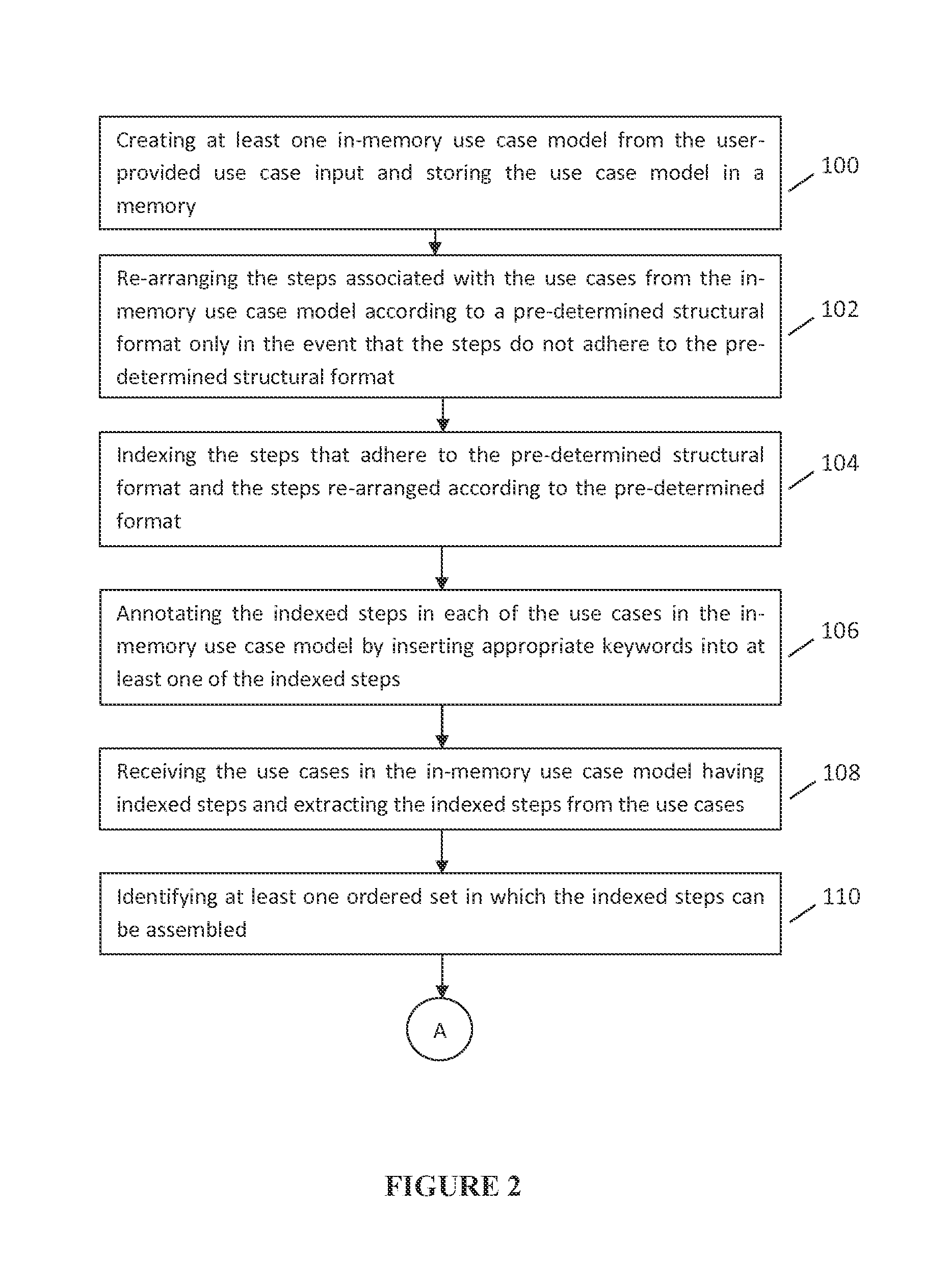Computer implemented system and method for indexing and annotating use cases and generating test scenarios therefrom
a technology of use cases and computer implementation, applied in the direction of instruments, program control, electric digital data processing, etc., can solve the problems of complex and time-consuming process of manual identification of appropriate test cases, limited number of tests that can be run, and inability to generate test scenarios
- Summary
- Abstract
- Description
- Claims
- Application Information
AI Technical Summary
Benefits of technology
Problems solved by technology
Method used
Image
Examples
Embodiment Construction
[0056]The term ‘main flow’ in an exemplary embodiment can refer to the set of use case steps that describe the most common way the use case executes normally (that is, successfully). The main flow contains the most preferred order of steps describing the interactions between the system under test and user.
[0057]The term ‘alternative flow’ in an exemplary embodiment can refer to the set of use case steps that describe the scenarios other than the ones that have been described through the main flow. The term alternative flow is used to represent an alternative order of steps describing the alternative interactions between the system under test and user.
[0058]The term ‘exception flow’ in an exemplary embodiment can refer to the set of steps taken by the system described by the use case when abnormal conditions occur. The term exception flow normally represents a path that is undesirable to the user, such as an error condition or unexpected response from the system for the user's action...
PUM
 Login to View More
Login to View More Abstract
Description
Claims
Application Information
 Login to View More
Login to View More - R&D
- Intellectual Property
- Life Sciences
- Materials
- Tech Scout
- Unparalleled Data Quality
- Higher Quality Content
- 60% Fewer Hallucinations
Browse by: Latest US Patents, China's latest patents, Technical Efficacy Thesaurus, Application Domain, Technology Topic, Popular Technical Reports.
© 2025 PatSnap. All rights reserved.Legal|Privacy policy|Modern Slavery Act Transparency Statement|Sitemap|About US| Contact US: help@patsnap.com



